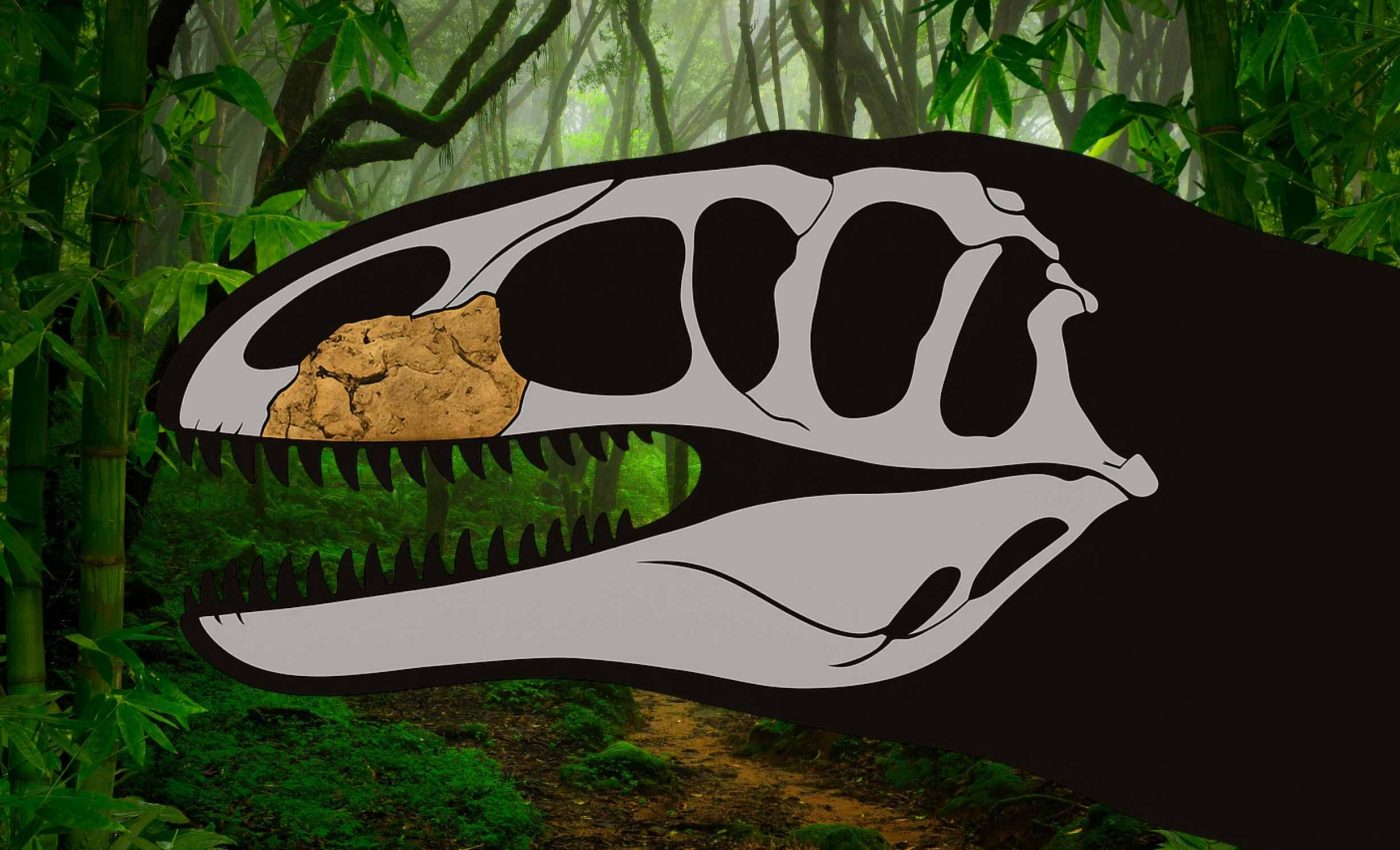
With teeth like knives, this giant kept the young tyrannosaurs at bay
A massive dinosaur once roamed ancient Central Asia, overshadowing the smaller ancestors of well-known tyrants. Its fossilized jaw left behind clues about a predator that was anything but ordinary.
This imposing creature, recently named as Ulughbegasaurus uzbekistanensis, opens a window into a time when early tyrannosaurs could not challenge its size.
The scientist who examined this forgotten beast, Dr. Kohei Tanaka from the University of Tsukuba, spotted something unusual in the decades-old jawbone, and that observation sparked new studies on this remarkable meat-eater.
Giant lurking in the shadows
The fossil came from rock layers dated to about 90 million years ago. These layers capture a world that existed long before towering tyrannosaurs rose to the top of the food chain.
Evidence suggests that this new predator had blade-like dentition, a feature that made it adept at slicing prey. Researchers believe these sharp edges distinguished its feeding style from the crushing jaws of later giants like T. rex.
Signs of an earlier hierarchy
While early tyrannosaurs of that period measured only around 10 feet (3 meters) long, the newly identified dinosaur was significantly larger, with a body length of around 26 feet (8 meters), and a mass of over 2,205 pounds (1,000 kilograms).
Paleontologists see this as a strong indication that, at that time, these smaller tyrants were not the apex hunters of their environment. Instead, Ulughbegasaurus was likely to have dominated with its large dimensions and fearsome teeth.
They propose that once the bigger competitor disappeared, tyrannosaurs seized the chance to grow. That growth ultimately paved the way for colossal species like T. rex, which eventually spanned more than 40 feet (12 meters) in length, in later eras.
A separate oddity from the desert
Another intriguing discovery involves Duonychus, an herbivore unearthed in the Gobi desert. This dinosaur, believed to have roamed parts of Asia, displayed an unusual hand with two large claws, each measuring about a foot (30 centimeters) in length.
“The claws on this one are about a foot long,” said Dr. Darla Zelenitsky, an associate professor at the University of Calgary.
A research team found one fossil with the nail still attached, which is a rare occurrence because keratin does not usually survive for millions of years.
A northern cousin with a fierce name
A separate species named Thanatotheristes degrootorum once lived in what is now Alberta, Canada, approximately 79.5 million years ago. It measured around 26 feet (8 meters) and likely preyed on large, plant-eating dinosaurs.
This new tyrannosaur is described in academic work on Canada’s paleontological record, and is recognized for having a more elongated snout than some of its relatives. That feature sets it apart and places it in a newly named subgroup of robust dinosaurs.
Teeth with an edge
Each discovery highlights how varied these theropod dinosaurs could be. Their dentition revealed that some species depended on crushing power, while others leaned on slashing capabilities.
Paleontologists link such variety to changes in local climate, food sources, and competitive pressures. They suggest that these shifting conditions across the Late Cretaceous allowed different predator shapes and strategies to flourish.
Competitive times and sudden exits
Fossils like these reveal that large carnivores and smaller tyrannosaurs coexisted, at least briefly. This coexistence set the stage for intense interactions when resources ran low.
The bigger hunters appear to have enjoyed a moment in the spotlight until their extinction opened the path for smaller species to expand and diversify. That opportunity shaped the next wave of colossal predators that dominated for millennia thereafter.
A constant hunt for clues
The search for remnants of these forgotten giants is ongoing, with new sites turning up evidence of their feeding habits, growth stages, and dominance in prehistoric ecosystems. Bits of bone often sit in museum collections for years before anyone recognizes their significance.
Teams around the globe continue to refine the dinosaur family tree. Each major find has a story to tell about adaptation and survival in a constantly changing environment.
Shifting balance in prehistoric power struggles
Paleontologists believe that ecosystem shifts may have determined which predators came out on top. When Ulughbegasaurus vanished around 89 million years ago, its disappearance left a vacuum that smaller tyrannosaurs were quick to fill.
These shifts may have involved climate patterns, declining populations of certain prey species, or changes in vegetation that disrupted food chains. Whatever the trigger, the fall of one apex predator helped carve the path for another to rise.
Filling the puzzle of dinosaur diversity
Experts stress that many gaps remain in our knowledge of Late Cretaceous life. New skeletons from places such as Central Asia, Canada, and Mongolia are expanding our understanding of prehistoric habitats and their inhabitants.
They predict that future work may reveal more species that briefly overshadowed early tyrannosaurs. Such discoveries show that dinosaur evolution was never straightforward or predictable.
The study is published in Cretaceous Research.
—–
Like what you read? Subscribe to our newsletter for engaging articles, exclusive content, and the latest updates.
Check us out on EarthSnap, a free app brought to you by Eric Ralls and Earth.com.
—–













